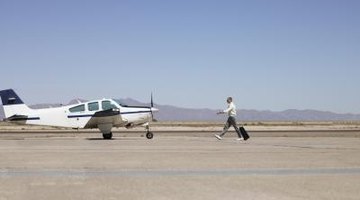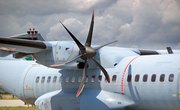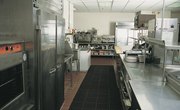Aspiring crop dusting students should check out the backgrounds, costs, courses and trainer qualifications of all three major crop dusting schools. All three schools have impressive training experience, so you should introduce yourself to the trainers to determine the school that is most compatible with your learning skills..
Aviation Schools
There are many aviation schools that teach general flight skills; however, there are only three major flight schools that specialize in crop dusting -- also known as agricultural spraying -- flight training. These schools provide basic flight training with emphasis on developing crop dusting skills.
Flying Tiger Aviation
Flying Tiger Aviation offers crop dusting training with a curriculum consisting of pilot skills including entries, exits, work patterns and emergency procedures, among others. All trainers are certified by the FAA. The school uses Citabrias dual-control, AG Cat and Turbine Thrush airplanes. Flying Tiger assists students in preparing for the Commercial Pesticide Applicators' Test. Students will also study the FAA, EPA and OSHA regulations. The company is headquartered in Oak Ridge but the school itself is located at the Rayville, Louisiana Airport.
Ag-Flight, Inc.
Ag-Flight crop dusting students are provided with free housing while attending its school, which is located in Bainbridge, Georgia. The three planes that students may train with include the dual-equipped Air Tractor 301, Pawnee and Super Cubs, which are equipped with a GPS. Training consists of 15 hours of dual-flight Super Cub, 20 hours of Pawnee solo and five hours of Air Tractor 301 training. The school provides job placement assistance to its graduates.
Sam Riggs' AG-Pilot Training Center
The Sam Riggs' AG-Pilot Training Center has been in business for over 30 years. The Center is located in the Dallas-Ft. Worth area. The school requires payment of a deposit of $500 as of March 9, 2011 with the admissions application. Among the school's many clients are over 14 foreign governments, the World Bank, U.S. Department of Agriculture and the U.S. Drug Enforcement Agency. Students will learn entomology, chemical safety, pesticide use laws, aircraft repair and maintenance and aircraft maneuvers. Costs of attendance are currently $15,000 for the "long course" and $7,500 for the school's "short course." Students will train using a wide variety of planes including Cessnas and Piper Pawnees. Training is hands-on and the Private Pilot course provides the FAA-required 20 hours of dual flight time, 20 hours of solo flight time, 20 hours of ground school training, as well as 20 hours of pre and post-ground training. Required textbooks are included in the cost of attending the flight school.
Related Articles
Writer Bio
Roger Jewell has been a professional writer for over 20 years. He is a published author for both the Graduate Group and PublishAmerica, and is also a freelance writer. Jewell is a former attorney and private investigator. He earned his law degree from the University of La Verne School of Law.











